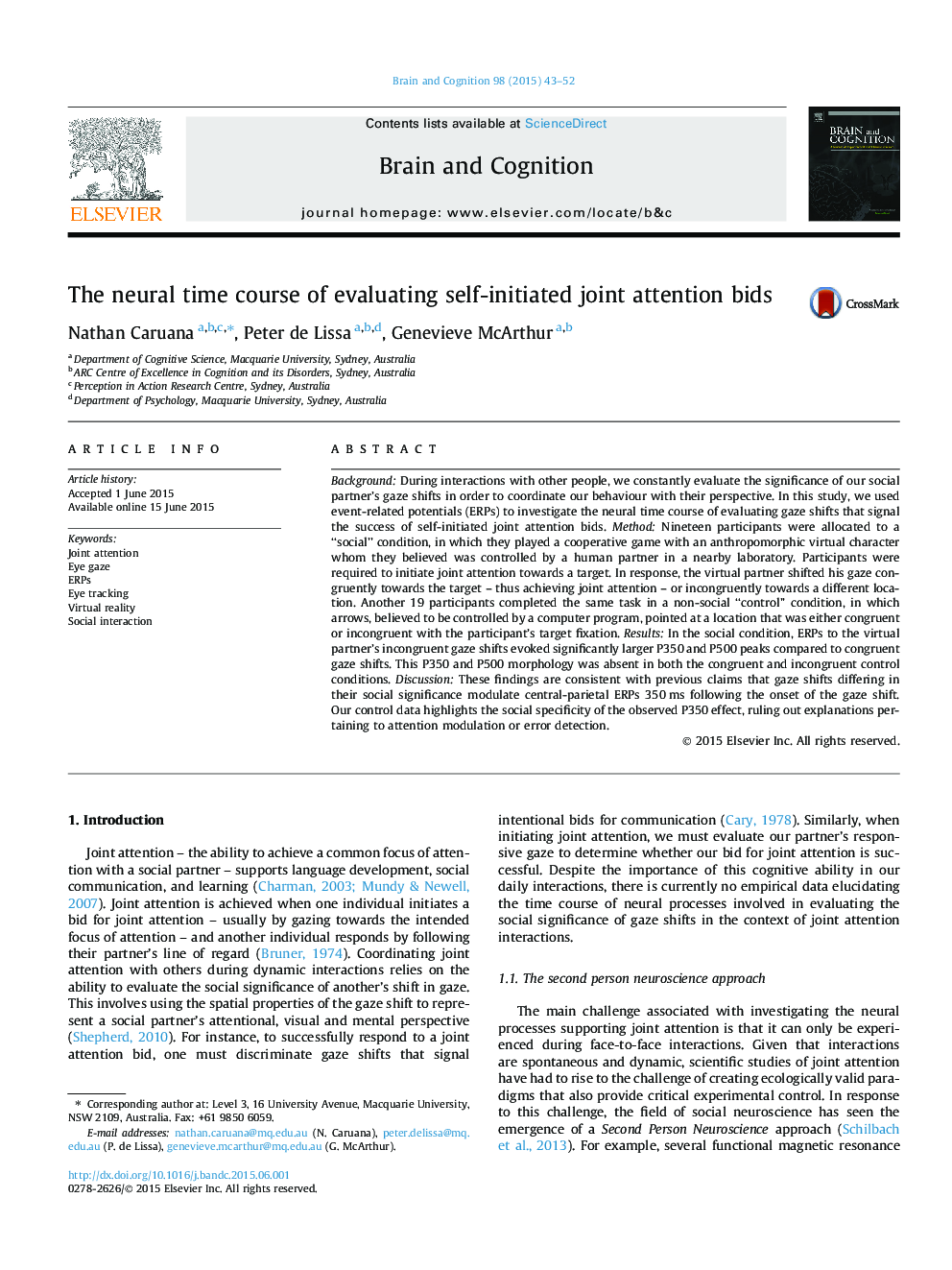| کد مقاله | کد نشریه | سال انتشار | مقاله انگلیسی | نسخه تمام متن |
|---|---|---|---|---|
| 923927 | 1473973 | 2015 | 10 صفحه PDF | دانلود رایگان |
• Participants played a cooperative game with a virtual character or arrow stimulus.
• Participants initiated joint attention bids towards a goal-oriented target.
• The virtual character responded congruently or incongruently to the joint attention bid.
• A centro-parietal P350 effect differentiated congruent and incongruent gaze shifts.
• This P350 effect was not observed for non-social arrow stimuli.
Background: During interactions with other people, we constantly evaluate the significance of our social partner’s gaze shifts in order to coordinate our behaviour with their perspective. In this study, we used event-related potentials (ERPs) to investigate the neural time course of evaluating gaze shifts that signal the success of self-initiated joint attention bids. Method: Nineteen participants were allocated to a “social” condition, in which they played a cooperative game with an anthropomorphic virtual character whom they believed was controlled by a human partner in a nearby laboratory. Participants were required to initiate joint attention towards a target. In response, the virtual partner shifted his gaze congruently towards the target – thus achieving joint attention – or incongruently towards a different location. Another 19 participants completed the same task in a non-social “control” condition, in which arrows, believed to be controlled by a computer program, pointed at a location that was either congruent or incongruent with the participant’s target fixation. Results: In the social condition, ERPs to the virtual partner’s incongruent gaze shifts evoked significantly larger P350 and P500 peaks compared to congruent gaze shifts. This P350 and P500 morphology was absent in both the congruent and incongruent control conditions. Discussion: These findings are consistent with previous claims that gaze shifts differing in their social significance modulate central-parietal ERPs 350 ms following the onset of the gaze shift. Our control data highlights the social specificity of the observed P350 effect, ruling out explanations pertaining to attention modulation or error detection.
Journal: Brain and Cognition - Volume 98, August 2015, Pages 43–52
